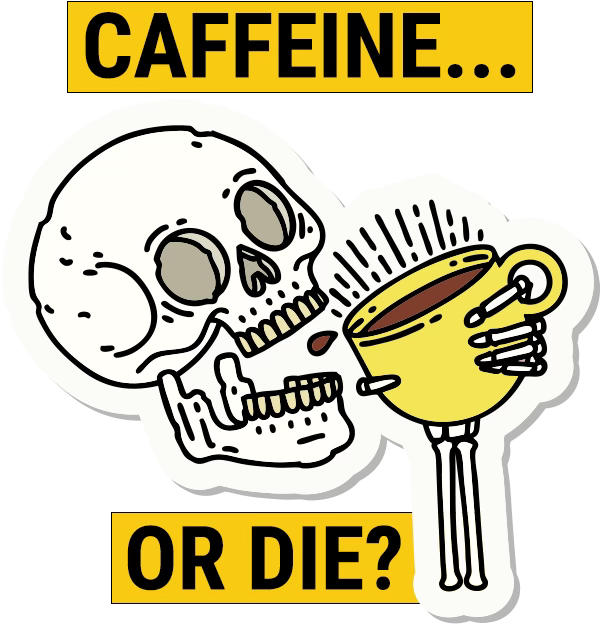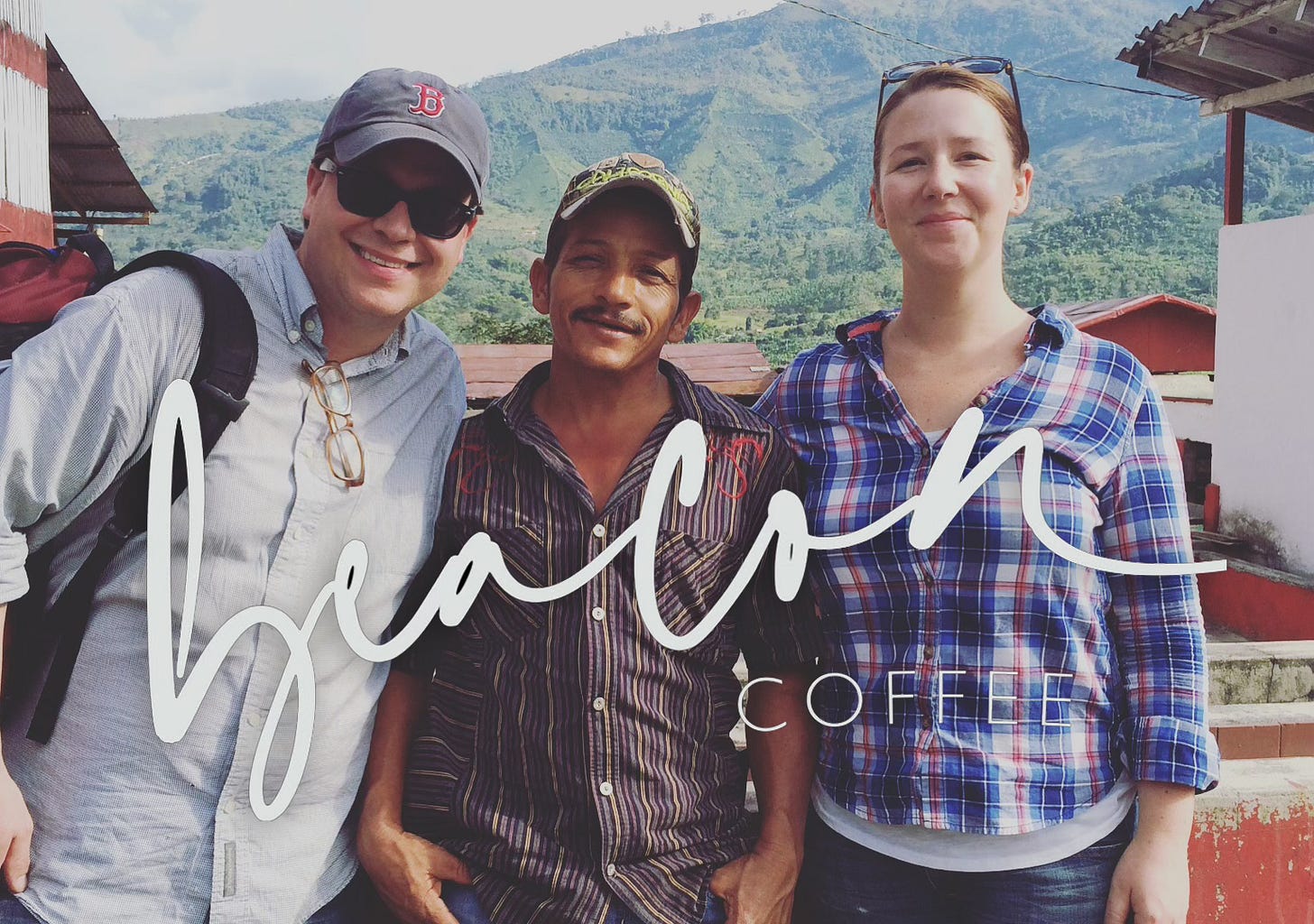Death Before Decaf?
It's time to stop demeaning the decaf drinkers, but it's also high-time roasters start making excellent decaf coffee.
Is drinking decaf really that bad?
You have probably seen the shirt or sticker declaring Death Before Decaf. If you’re into specialty coffee as a barista or a connoisseur, then you’ve definitely seen the statement. But what is really wrong with a decaffeinated coffee in the first place?
For starters, it lacks caffeination! How dare a roaster even waste their time and money sourcing it, let alone letting the farmers grow the beans, only to let the fruit go through a caffeine-extraction process!
All joking aside, there is a market for decaf coffee beans. That’s why some companies sell it to begin with. But who are these people? Have you ever met someone who really needed a decaf beverage out in the wild?
Yes—Some Humans Do Require Decaf
These consumers do really exist, and many times they might be required by their doctors to omit caffeine, but they still really love the flavor and experience of coffee. I’m here to say—decaf is okay!
Then there are those who know the strong effect that caffeine can have on their body. Maybe it’s age. Maybe it’s diet or metabolism. Or maybe it’s just that point in the afternoon where this particular consumer does not want to stay up all night. Again, I say decaf is okay!
It’s time for the coffee industry to stop demeaning the decaf drinkers, making them a pariah. The time is now to cater to this market that has been poked, prodded and made fun of just because of their caffeination preference. Decaf is okay.
And—decaf is here to stay. That means the coffee industry needs to pivot.
Let’s Talk About How Decaffeinated Coffee Is Made—A Science Lesson
Since we have declared that we aren’t going to tear down our fellow decaf drinkers, I wanted to take a moment to talk about how we remove the caffeine from coffee beans. Spoiler Alert: it’s science.
According to the Scientific American:
There are three main decaffeination processes currently in use. They have some basic similarities. In all three approaches, the green or [sic] roasted beans are first moistened, making the caffeine soluble so that it can be drawn out.
All three methods start out with the green, unroasted coffee beans. To get the caffeine out, usually the green beans will be soaked in water which allows the caffeine, along with lots of the flavor molecules (more on this in a moment), to dissolve out.
At this stage, the three processes are as follows:
One method uses a charcoal filter to remove the caffeine from the water. This is sometimes called the “Swiss Water Process” and has been very popular over the years.
Another method is the direct solvent method using methylene chloride or ethyl acetate. Either the solvents are added to the coffee/water mix (the direct method) or by removing the water from the beans, and then adding the solvent to it (the indirect method). Fun Fact: The State of California is trying to ban these solvents
A third method uses carbon dioxide at extremely high pressures to dissolve the caffeine. Many like this because the CO2 is readily available in the atmosphere, and in this “supercritical” high pressure state, the effect is very similar to a chemical solvent without the chemicals. It’s more expensive, but has a better rate of extraction with 96 to 98 percent of the caffeine being removed.
In the end, the flavors need to be returned to the beans, and that’s done by evaporating the water away so the flavonoids return.
Does Decaf Even Have Flavor?
So we’ve removed the caffeine which also removed the flavor, only to add it back in again. So does decaf have flavor?
Yes. Yes it does. Albeit an altered flavor.
But can it be as nuanced and exciting as the caffeinated beans?
This is where I want to place the onus back on the coffee industry and the specialty roasters around the world. Coffee is highly influenced by every variable that touches it, from the region and terroir, to the processing, the roasting, and then brewing. Extracting the caffeine and adding the flavonoids back is no different. However, this is where the roasters have a role to play in elevating the decaf experience.
Stop demeaning the customers who drink it,
but also please stop demeaning the decaffeinated beans.
It’s High-Time Roasters Start Making Excellent Decaf
A few years back, I had the pleasure of working with Beacon Coffee Roasters in Ventura, California. John Wheir and his wife Jennifer had already been traveling to origin for years before venturing off to open their flagship storefronts.
It was in my time working with John that he highlighted that he wanted to produce an excellent, desirable decaf. His argument—”Why we would produce anything less?”
It was an eye-opening revelation. Why would they travel and source excellent beans and establish relationships with the farmers around Latin America, to then neglect the careful roasting process of this decaffeinated coffee?
My experience at Beacon Coffee was the first time I tasted enjoyable decaf espresso that had all the love and care put into it just like Beacon’s Twenties Espresso blend or their spectacular La Pastora. Sadly, it was also kind of the last.
Not to say I’m going around ordering decaf. But hundreds of thousands are. So why aren’t more specialty roasters taking the approach of John and Jen and making excellent, desirable decaf?
My challenge to the roasters reading this—take on decaf. Make it delicious. Present it at SCA competitions. Talk about it with your managers and baristas. Stop demeaning the customers who drink it, but also please stop demeaning the decaffeinated beans.
We dishonor the farmers, their families and their communities when we dishonor the beans. I get it—decaf does lose its flavor. But if you’re not going to honor the beans or the guests who drink it, then please take it off your roast schedule and don’t offer it to guests.
However…if you are going to sell it to this market segment, then bring on the honor.
Honor your guests who deserve an excellent product.
Honor your farmers who still put their blood, sweat, tears and livelihood on the line to get you your beans.
Honor the bean itself that had its caffeine and flavor ripped apart from it, now a semblance of its former self.
Industry Shoutout
If you’re ever driving up or down California’s Central Coast, be sure to check out Beacon Coffee. John and Jennifer Wheir were one of the first roasters in Southern California long before it was cool, harnessing their passion for coffee and the desire to highlight the communities and families who grew the beans abroad. They are in Ventura, California, right off the freeway. Their Beacon Flat White with breve and their Twenties (or seasonal Tecolote) Espresso is to die for. Be sure to tell them that
sent you!FOLLOW BEACON COFFEE:
Website | Instagram | Google Maps | Apple Maps
And the one last word about honoring the drinkers, decaf and full transparency:
I will never understand the mind of those who order “half-caff” beverages. Can’t we just go big (caffeine) or go home (decaf)? I’ll gladly split a shot for you, but what is with this caffeination middle-ground. Mixing two separate roast profiles and two extraction recipes never did your palate any favors.
Comments on this post are open to all free and paying subscribers! Let me know if you have any questions or DM me on Substack Chat.







Please leave any comments here! I'll do my best to answer any questions you might have or defer to my rolodex of coffee connections to get you the answers you seek!
I drank decaf for years do to high blood pressure. Add caffieine and I had headaches. I was a member of Beacon's Coffee Collective for that ENTIRE TIME for th exact reason you mention! I also don't like being "addicted" to caffeine so some days I go w/o coffee just to fight the addiction. I would LOVE to drink all decaf but there are just not enough choices out there.
I have since moved from Ventura County to Idaho and have found a new coffee home in Boise, but alas, no good decaf like Beacon. long live Beacon Coffee!!